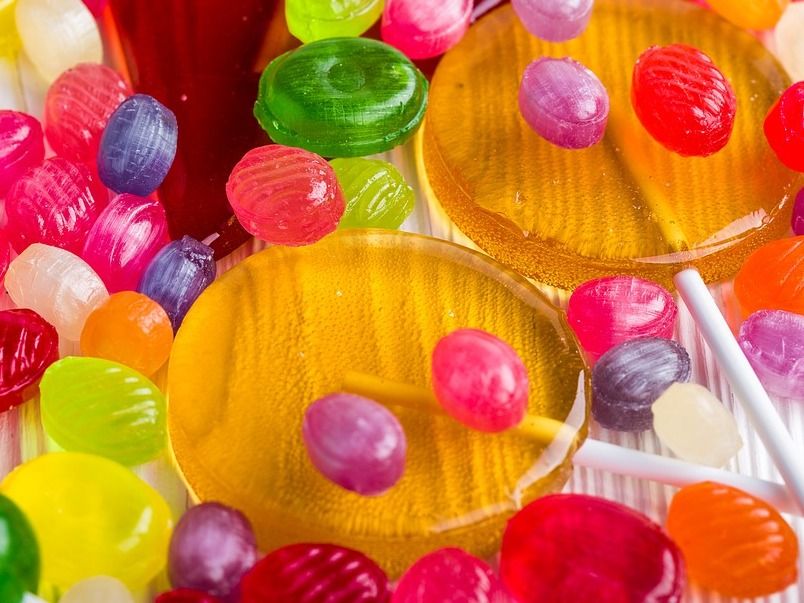Sugar saturation: Are kids being especially targeted and tempted?
Advertisement
Germany's market for sweets is saturated. Consumers are getting more choosy, and so advertising and marketing now play a major role in the trade. But this is a cause for concern when it comes to the issue of the industry's targeting of children.

Daria-Yakovleva/ Pixabay
The confectionery business is not a cake walk these days. Germany's domestic market is saturated, while exports in 2017 fell slightly. Consumers have become more health and quality-conscious about sweets.
Thus the outlook is not so sweet on the eve of the world's largest industry fair for the sweets and snacks industry, ISM 2018, which opens Sunday in Cologne. Bastian Fassin, an official with the German confectionery industry federation BDSI, says producers are operating in a "gigantic request show" where consumers are making their tastes and desires known.
"The offering is becoming increasingly differentiated and broader," he says. And marketing is playing an important role.
But this is a cause of concern among health sector experts. In such marketing, children were being increasingly exposed to the "temptations" held out by advertisers.
"The confectionery industry is among the top 10 advertisers in Germany," notes Franz-Rudolf Esch, director of brand and communication research at the EBS Business School.
Without new taste combinations and innovations, sweet producers cannot survive in what is a tough environment.
"The flop rate of new products in the consumer sector is over 70 per cent," Esch said. "After a year, half of the products are no longer on the shelves."
With regard to sweets, Esch sees "hybrid" behaviour on the part of some consumers. On the one hand, they are health-oriented, but on the other they still have a sweet tooth.
"There is no question that consumers are aware that sweets may contain sugar, fat and dyes. But in the store, the rational is often overcome by the emotional," he said. The responsibility for their own nutrition lies with the consumers themselves.
At the same time, many producers have started to lower sugar content, are pushing sustainable cultivation of ingredients and fair trade, and are producing with an eye to allergy compatibity, Esch says.
At this year's ISM, companies are offering such products as lactose-free chocolate, vegan fruit bars, low-fat dried pineapple-curry crisps and sugar-free roasted almonds.
At the same time, gelatin-free fruit gums and animal crackers with greatly reduced salt are meant to lure customers, both young and old.
Many products and brands specifically aim at children as an important target group. Esch says this is not surprising.
"For one thing, they can buy products from their own pocket money by themselves. Secondly, they have a central influence on purchase decisions. And thirdly, they are the customers of tomorrow," he said.
But Tobias Effertz, of Hamburg University's Institute of Law and Economics, warns about the health risks.
Very many sweets are oriented to children, "and marketing also speaks mainly to children," he says.
Such ISM novelties as make-your-own gummi bears, lollipops with tattoos or dracula fruit gums are aimed at children.
Effertz, who has carried out a study for the public health insurance company AOK, criticizes how children are targeted more often and more aggressively in advertising and, increasingly, on the internet and in social media.
"On the product page a cartoon figure speaks directly to children. Everything is colourful, there is music and a sweepstakes. Or there will be a comic figure taking a bite of a chocolate bar and its eyes then go flashing and it changes into Superman," he says.
When children then click the "like" icon and share it with others, then the companies profit further.
Fassin of the industry federation BDSI stresses that the existing products as well as new ones are aimed at all consumers and not primarily at the younger ones.
Statistics underscore how sweets are highly valued by young and old alike. By BDSI estimates, in Germany last year the per-capita consumption of sweets, snacks and brand ice creams came to 31 kilograms. This was just around 5 per cent of Germans' total food consumption of 670 kilogrammes.
Most sweet manufacturers, Fassin said, are adhering to a voluntary commitment not to do any advertising aimed at children younger than 12 years old. But Effertz is dismissive of this.
"The manufacturers are employing the entire gamut of advertising tools. The primary goal of suppliers of unhealthy foods is maximizing revenues," says the Hamburg law and economics expert.
Children are strongly in their focus, but not yet in a position to evaluate everything properly.
"It would be more fair to direct the advertising at the parents. Child-oriented marketing should be forbidden." (dpa)




























































